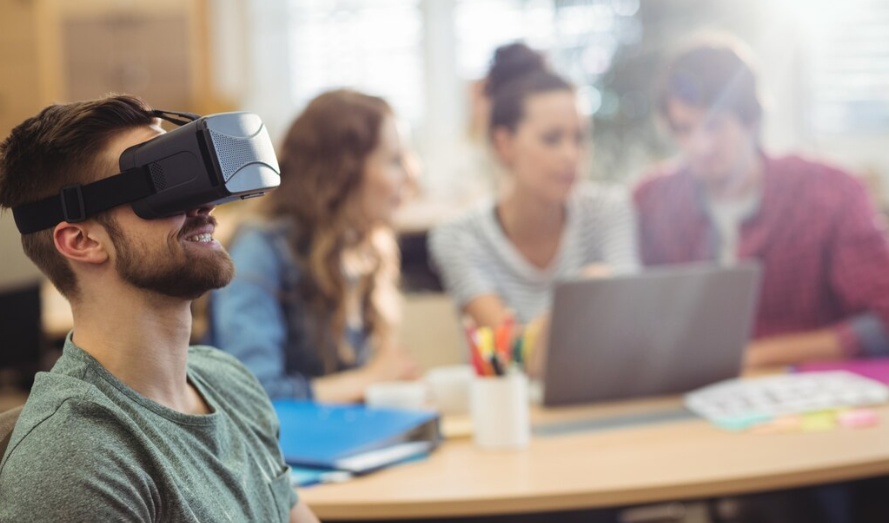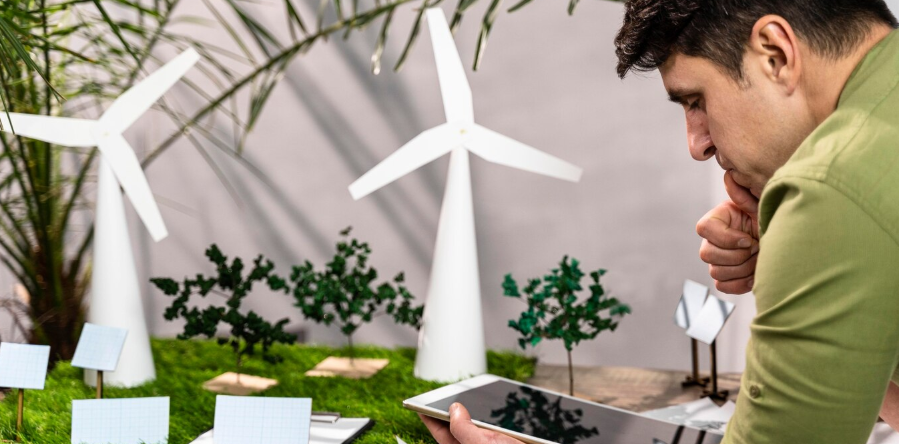Artificial Intelligence (AI) has rapidly evolved from a niche technological innovation to a transformative force shaping industries, economies, and daily life. While AI’s influence is felt across various domains such as healthcare, finance, and logistics, one area that has sparked considerable debate is its impact on human creativity. Traditionally, creativity has been regarded as a uniquely human trait, defined by our ability to think imaginatively, solve problems, and produce original works of art. However, with the rise of AI-powered tools capable of generating music, art, literature, and even solving complex problems, many are questioning how AI will influence the future of human creativity. Will AI become a tool that enhances human creativity, or will it replace the human element altogether? This article explores the evolving relationship between AI and creativity and what the future may hold.
Understanding the Role of AI in Creativity
AI’s role in creativity is multifaceted. At its core, AI excels in pattern recognition, data analysis, and automation—tasks that are invaluable in creative processes. AI systems such as machine learning models can process massive amounts of data, learning from it and applying that knowledge to generate new ideas or mimic existing ones. Some of the most prominent AI applications in creativity include:
- Generative Art: AI can create visual art, from paintings to digital illustrations, often imitating the styles of famous artists or developing entirely new forms. Tools like DeepArt and Google’s DeepDream are examples of AI-driven platforms that generate unique artistic works.
- Music Composition: AI is now capable of composing music that ranges from classical symphonies to contemporary pop. AI-powered tools like OpenAI’s MuseNet and Jukedeck can compose music based on specific parameters or even create original pieces by learning from vast databases of existing compositions.
- Literature and Writing: AI is making its mark in the literary world as well. GPT-based models, like the one generating this article, can write poems, stories, articles, and even complex essays. While still lacking the nuance and emotional depth of human writers, these tools are evolving quickly and have already contributed to projects such as AI-generated books and articles.
Enhancing Human Creativity with AI
While AI’s involvement in creativity might sound like a threat to the traditional role of human creators, many experts believe that AI can be a powerful tool that enhances human creativity rather than replaces it. By automating repetitive tasks or providing new methods of expression, AI allows humans to focus on higher-order creative processes and explore new artistic dimensions.
1. A Source of Inspiration
AI can serve as an endless source of inspiration for creative professionals. For instance, an artist might use AI to generate a variety of visual concepts based on a given set of inputs, using these outputs to inform their own designs or to spark fresh ideas. Similarly, writers can use AI to create plot outlines, character names, or even dialogue to jumpstart their creative processes. By leveraging AI’s ability to think outside traditional boundaries, creators can explore unconventional ideas they may not have considered on their own.
2. Fostering Collaboration
Rather than replacing human creators, AI can foster collaboration between humans and machines. For example, musicians might use AI-generated beats or melodies as the foundation for their songs, while they add their personal touches to the composition. In this way, AI acts as a creative partner, enabling humans to push the limits of what they can achieve. Collaborative platforms are emerging where artists, writers, and designers can work alongside AI tools to co-create new, innovative works.
3. Automating Tedious Tasks
Creative processes often involve repetitive tasks—whether it’s sketching preliminary designs, refining text, or adjusting the structure of a musical piece. AI can automate these tedious parts of the creative process, allowing creators to focus on more complex, visionary aspects of their work. For example, in film production, AI can be used to handle technical aspects of post-production, such as color correction or sound editing, freeing up directors and editors to focus on the storytelling.
Will AI Replace Human Creativity?
While AI offers significant potential to augment human creativity, concerns about the automation of creative fields persist. As AI becomes increasingly capable of generating realistic images, writing coherent stories, or composing music, some fear that it could lead to a future where human creativity is sidelined or replaced altogether. This raises important questions about the role of AI in the creative industries:
1. Loss of Emotional Depth
Creativity is not just about producing novel outputs; it is deeply intertwined with human emotions, experiences, and intentions. A key question is whether AI can ever truly replicate the emotional depth and meaning that human creators infuse into their work. For instance, AI-generated art or music may be technically impressive, but can it evoke the same emotional response as a painting created by Picasso or a song written by Bob Dylan? Many argue that true creativity involves the expression of personal experience and emotion—something AI may struggle to capture.
2. The Ethics of AI-Generated Content
As AI becomes more advanced in generating creative works, ethical issues regarding authorship and intellectual property arise. If an AI generates a novel painting or a song, who owns the rights to the work? Should the credit go to the creators of the AI or to the AI itself? Furthermore, the rise of AI-generated content challenges traditional definitions of artistic value. Can AI-generated art be considered “real” art, or does it lack the human touch that gives art its meaning?
3. Job Displacement Concerns
Another fear is the potential for job displacement within creative industries. With AI’s increasing ability to generate content at scale and in various styles, some worry that traditional creative jobs—like graphic designers, musicians, and writers—could become obsolete. However, many experts believe that AI will simply redefine the nature of these jobs, enabling professionals to focus on more high-level creative tasks and work alongside machines to create groundbreaking content.
The Future of Human Creativity and AI
Rather than replacing human creativity, AI is likely to coexist with it, enhancing the creative process and providing new opportunities for artistic expression. The future of creativity may involve a symbiotic relationship between humans and AI, where each complements the other’s strengths.
1. AI as a Tool for Personalization
As AI becomes more personalized and attuned to individual preferences, it can help creators craft highly customized works. For example, a writer might use an AI tool that adapts to their unique writing style, suggesting improvements or providing inspiration based on their past work. In music, AI may allow musicians to generate compositions that cater to the personal tastes and preferences of individual listeners.
2. Exploring New Forms of Art
As AI continues to push the boundaries of creativity, new forms of art may emerge that were previously unimaginable. Artists and designers might begin to explore entirely new mediums, blending AI with human creativity to create interactive, dynamic experiences. AI-generated art installations, virtual reality (VR) exhibitions, and immersive experiences may reshape how we define art and creativity in the digital age.
3. AI in Education and Skill Development
AI has the potential to revolutionize how creativity is taught and nurtured. AI-powered educational tools can guide students and emerging artists, providing them with personalized feedback, learning materials, and examples. As AI continues to evolve, it will play a key role in fostering new generations of creative minds by helping them learn, experiment, and hone their skills in ways that were once unimaginable.
Conclusion
Artificial intelligence is undoubtedly reshaping the creative landscape, offering new tools for human creators to enhance their craft and push the boundaries of artistic expression. However, AI’s role in creativity remains complex. While AI may never fully replace the human elements of emotion, intention, and personal experience, it has the potential to complement and amplify human creativity in exciting ways. The future of creativity will likely be defined by a partnership between humans and machines, where AI serves as an enabler, freeing up human creators to focus on visionary ideas while automating routine tasks. As we move into the future, the relationship between AI and human creativity will continue to evolve, offering both challenges and opportunities for the next generation of artists, musicians, writers, and innovators.


